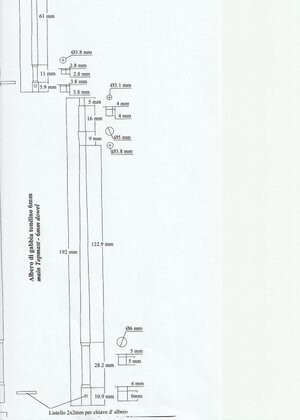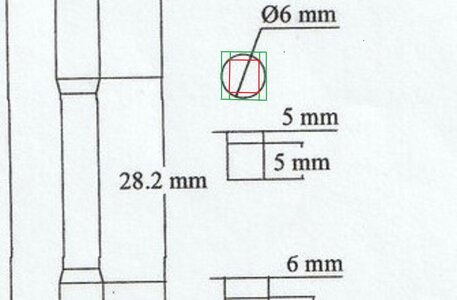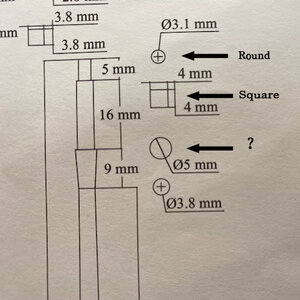Hello STGCS,
I suppose that you do not master the Italian language and therefore you misunderstood the drawing:
Chiave in Italian is dowel in English. Which is square 2mm shown left from the mast assembly
Your top mast sections from bottom to top are as follows:
Section length (bottom) 10,9mm = square 6mm
Section length 28,2mm = square 5mm (make a jig to do it properly)
Section length 122,9mm = round conical diameter 6mm ending 3,8mm
Section length 9mm = round conical diameter from 3,8mm to 5mm
Section length 16mm = square 5mm
Section length (top) 5mm = round diameter 3,1mm
Dowel (to sit top mast on the cross tree) square 2mm
I hope to have been helpful
Best regards
Denis











